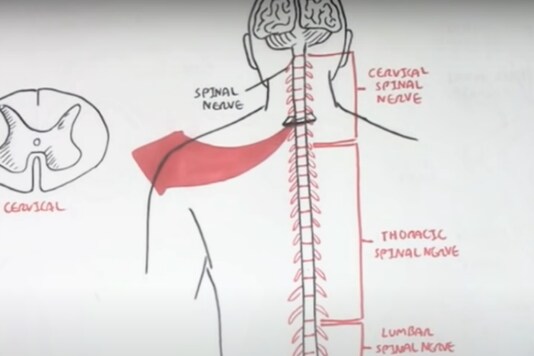Spinal injuries can render a person motionless or have irreversible damage to the nervous system that affects mobility and cognitive strength.
So far, such injuries are irreparable in most cases. Researchers at SISSA now believe that neural connectivity and motor skills can be regenerated by implanting carbon nanotubes at the site of injury. The study was carried out in a decade long collaboration with the University of Trieste.
The technique has never been tried before. In the study, they used nanomaterial implants (carbon) in animals with spinal injury. They observed that nerve fibres started to regrow. Subsequently, even motor functions were restored after some time.
The study has huge implications for potential therapeutic methods. The models used electric and mechanical benefits of regenerative scaffolds as a treatment for damaged areas. The study was published in Proceedings of the National Academy of Sciences (PNAS).
“We have been studying the interaction between neurons and carbon nanotubes for 15 years. Finally, we have been able to challenge their function in vivo,” explained Laura Ballerini. She is a neurophysiologist at SISSA. The co-author is Maurizio Prato, chemist, University of Trieste.
They have been studying the effect of smart materials like carbon nanotubes on the growth of nerve cells for 10 years. They started simple, but gradually moved to more complex systems that could actually support mammalian neural cell growth.
They added, “In recent years, we passed from single neurons to brain tissue explants and from single nanotubes to two-dimensional structures and, now, three-dimensional ones.”
Center for Cooperative Research in Biomaterials (CIC biomaGUNE) already demonstrated this regrowth phenomenon as linked with re-growing nerve fibres (at the site of injury) by magnetic resonance. According to Ballerini and Prato, this regrowth is “definitely preferred by nanotube implantation,” as reported on azonano.
The researchers claimed they are not taking the results for granted here. All functionality has been tested and retested without a single incident of rejection. In fact, electron microscopic observations and bio-marker studies confirmed that the new cells formed did not exist outside of the original cell, but as an integral part of the whole tissue. That is to say, there were no boundaries between the site of injury, the nanomaterial, and the regenerated tissue.
The results have potential applications in both biomedical and novel therapeutic methods.
